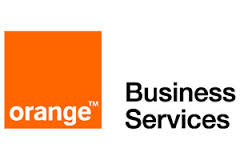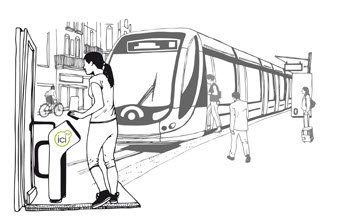Orange Business Services’ Smart City Picture Is Coming Into Focus

 The picture is slowly coming into focus, and it’s a good one. This time last year I scolded Orange Business Services for not presenting a comprehensive smart cities strategy – particularly after having announced smart cities as one of its strategic pillars for the year. The announcement at their 2012 analyst event was not about a strategy; it was an announcement that they were going to create a strategy, and that they had appointed someone to do that. Well, Nathalie Leboucher has been in her role for 18 months now and progress has been made. Orange has developed a portfolio of solutions – mostly based on pilots across France and in the Middle East – and has announced several key partnerships. Yet there is more to do to develop a comprehensive message demonstrating that Orange “gets it” with regard to cities and can leverage all its assets to help cities (and capitalize on the opportunity).
The picture is slowly coming into focus, and it’s a good one. This time last year I scolded Orange Business Services for not presenting a comprehensive smart cities strategy – particularly after having announced smart cities as one of its strategic pillars for the year. The announcement at their 2012 analyst event was not about a strategy; it was an announcement that they were going to create a strategy, and that they had appointed someone to do that. Well, Nathalie Leboucher has been in her role for 18 months now and progress has been made. Orange has developed a portfolio of solutions – mostly based on pilots across France and in the Middle East – and has announced several key partnerships. Yet there is more to do to develop a comprehensive message demonstrating that Orange “gets it” with regard to cities and can leverage all its assets to help cities (and capitalize on the opportunity).
As for Orange’s overall strategy and messaging, the focus remains highly network and technology centric. That’s clearly an area of strength. Having a solid network foundation for enterprise connectivity ensures day-to-day business and continuity in emergencies – which there seems to be no shortage of. Last year Orange highlighted its business continuity measures during the events in Cairo (which were clearly relevant again). This year the proof point was Hurricane Sandy in the US. Here Orange clearly has a strong value proposition – and one that is increasingly relevant to cities and their broad set of stakeholders.
And, this really brings me to one of my frustration with Orange’s overall smart city story. The Orange-wide story could be stronger. The portfolio of solutions within the smart cities business unit clearly addresses issues of importance to cities – smart metering and utilities management, public transportation and parking, eAdministration and payments etc. But several pieces of the story seemed to be missing. Why should a city go to Orange for a parking solution when Streetline partners with a number of service providers? Why should a city chose Orange for water management or smart metering? Well, that continuity story seems pretty compelling when you imagine the need to maintain the network and the connectivity in the face of political upheaval or the disastrous effects of Mother Nature. Sandy and Cairo are great proof points not just for businesses looking to ensure their uptime in a moment of crisis but for cities as well, whose leaders need to ensure not only the continuity of city services but the calm of the city constituents. Orange brings more value behind the scenes than the smart city proposition currently indicates.
 With investments in public infrastructure in France, Orange will certainly have the opportunity to put its solutions to the test and demonstrate the continuity value proposition. Take public transportation. The French Minister of Industry pledged support for building out NFC infrastructure across France several years ago. Despite delays in the rollouts– mainly due to limited handset support for the standards, that promise is now coming to fruition and is already deployed for public transportation in Nice and Caen. Now 15 cities have received subsidies from the French government for implementing NFC readers to enable trains, trams and buses to accept mobile payments. The national government will provide 1/3 of the total €66 million euros investment. In another transport example, Orange will provide a gateway for buses that captures a variety of networks and converts the connectivity into WiFi – both 3G and 4G to WiFi – essentially upgrading the connectivity of riders who are using only 3G-enabled devices. A partnership announcement is forthcoming, I believe. We’ll stay tuned not only to find out about the partner but to hear how business continuity can benefit city services as well.
With investments in public infrastructure in France, Orange will certainly have the opportunity to put its solutions to the test and demonstrate the continuity value proposition. Take public transportation. The French Minister of Industry pledged support for building out NFC infrastructure across France several years ago. Despite delays in the rollouts– mainly due to limited handset support for the standards, that promise is now coming to fruition and is already deployed for public transportation in Nice and Caen. Now 15 cities have received subsidies from the French government for implementing NFC readers to enable trains, trams and buses to accept mobile payments. The national government will provide 1/3 of the total €66 million euros investment. In another transport example, Orange will provide a gateway for buses that captures a variety of networks and converts the connectivity into WiFi – both 3G and 4G to WiFi – essentially upgrading the connectivity of riders who are using only 3G-enabled devices. A partnership announcement is forthcoming, I believe. We’ll stay tuned not only to find out about the partner but to hear how business continuity can benefit city services as well.
And, we’ll also have to stay tuned to hear about how other pieces of the Orange portfolio can serve cities. For example, many cities prioritize citizen well-being and health. Orange has a number of solutions and partnerships in mHealth that cities will care about (i.e. remote monitoring of pacemakers or sleep apnea devices). While it might not be in the city’s purview to monitor these types of devices, cities across the globe are investing in senior citizen homes and other services for the elderly. Remote monitoring solutions come to play. But that broader story wasn’t part of the smart city discussion – in part due to Orange’s own internal organization. mHealth falls under M2M not smart cities.
Last year I argued that OBS could have a comprehensive smart city strategy; but they didn’t yet. This year, the picture is clearly starting to come into focus. Orange has put together a solid team to drive their smart cities solutions – but not yet a clearly articulated Orange-wide smart cities message and portfolio. I recognize the reluctance to present a story that is not yet “baked.” We all know tech vendors who’ve erred on that side of the balance. But there is a broad, compelling (and real) story that Orange must tell. Go-to-market messages must be audience based, dictated neither by solutions nor technology nor by internal organization or organizational mandate. A comprehensive smart city story pulls solutions and value propositions relevant to the audience from across the whole company. And, I look forward to hearing it.